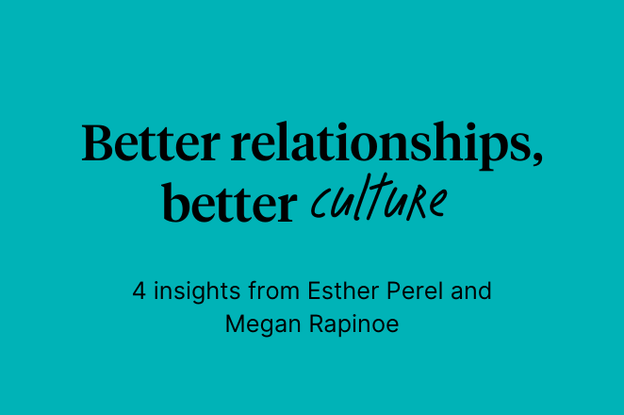How emotional contagion plays a part in employee engagement

When it comes to the benefits of employee engagement, many speak to the behaviors that an engaged employee is likely to exhibit, as well as engagement’s potential impact on the bottom line. There’s one little-known benefit that hasn’t gotten as much attention – employee engagement is contagious!
Emotional contagion, the phenomenon that an individual’s emotions can be unconsciously passed on to other individuals and groups, has been studied for over fifty years. But how does contagion apply to employee engagement? Surprisingly, engagement can spread at many levels. First, within the individual through positive gain spirals. Second, within a work team. Finally, engagement can cross over to personal partners.
In this article, we explore how emotional contagion happens and why it matters for people and the workplace.
How employee engagement grows within an individual
Hobfoll’s Conservation of Resources (COR) theory, while originally intended as a model for stress and trauma, has become a key approach for employee engagement research. In its simplest form, the theory holds that individuals seek to acquire and maintain resources. When we have resources, we’re happy, and when we lose them, we experience stress. Accordingly, when we have personal resources (e.g., self-efficacy) and job resources (e.g., social support, job autonomy, feedback), we’re more likely to be engaged.
While the idea that resources lead to engagement is fairly clear and expected, what’s even more interesting is that this relationship is reciprocal. As an individual becomes more engaged, they are more likely to seek out and utilize their available resources. The abundance of resources isn’t necessarily changing in this process, rather it’s their perception of those resources that improve.
For example, an engaged individual might ask for feedback more often or take advantage of learning and development opportunities that others do not. This is considered a "gain spiral" and is one way that engagement can beget more engagement. However, Hobfoll has noted that gain spirals are particularly fragile because, as humans, the effect of losing resources is much stronger than the effect of gaining resources.
Try this tip: Look for people who aren’t utilizing available resources (e.g., social support, job autonomy, feedback) and encourage them to take part. Additionally, make sure employees are aware of the resources available to them. This can help build a foundation for individual employee engagement.
Team engagement can influence an individual
While understanding how engagement can be contagious within an individual is valuable, it doesn’t fully capture how most people work nowadays – in teams. As teams become the core unit for getting work done in the modern organization, we need to consider how the social experience of being on a team can impact individual engagement levels.
In 2006, Bakker, Emmerik, and Euwema set out to understand if a team’s level of engagement was statistically related to an individual’s engagement. After controlling for the impact of job demands (e.g., work pressure, emotional demands, and performance expectation demands) and resources (e.g., autonomy, opportunities for professional development, supervisory support), the team’s engagement accounted for 5-21% of the variance in an individual’s engagement, confirming the hypothesis that emotional contagion of engagement within teams exists.
Try this tip: Bring more joy to your team meeting. That could mean spending five minutes in the beginning to state one positive thing that has happened in the last week. Or it could mean ending your meeting with a short appreciation round where each member thanks another for something they have done.
Engagement can sneak through the work/life barrier
With an understanding that engagement can spiral within an individual and be contagious, the logical step is to explore what effect, if any, it can have on an employee’s personal life and vice versa. In 2009, Bakker and Demerouti examined whether in dual-earner couples, one partner’s work engagement could cross over to the other partner’s work engagement.
Not only did they find support for engagement crossover, but they also found that a woman’s level of work engagement can impact her partner’s work performance by increasing the partner’s engagement. While this study analyzed female-to-male crossover, previous studies have found support for male-to-female engagement crossover as well. No studies have yet been completed on cross-over in same-sex couples.
Try this tip: Don’t shy away from sharing your work excitement with your partner! You never know how much it can brighten their workday as well. When your partner shares their experiences at work, try to mentally put yourself in their shoes to fully engross yourself and take advantage of the contagiousness of their
A note on negative emotions
Sadly, emotional contagion doesn’t only work one way. Burnout is also contagious. While the previously-held belief was that negative emotions would be more contagious than positive emotions, a recent study looking at emotional contagion on Twitter actually found positive emotions to be more contagious. This is encouraging news on the power of positive emotions and reinforces how important it is to recognize employees for good work as a direct means of increasing those feelings.
Emotional contagion can work for you or against you. The question is, what do you want your employees to be transmitting? Here’s to many more individuals, teams, and partners spreading engagement!







